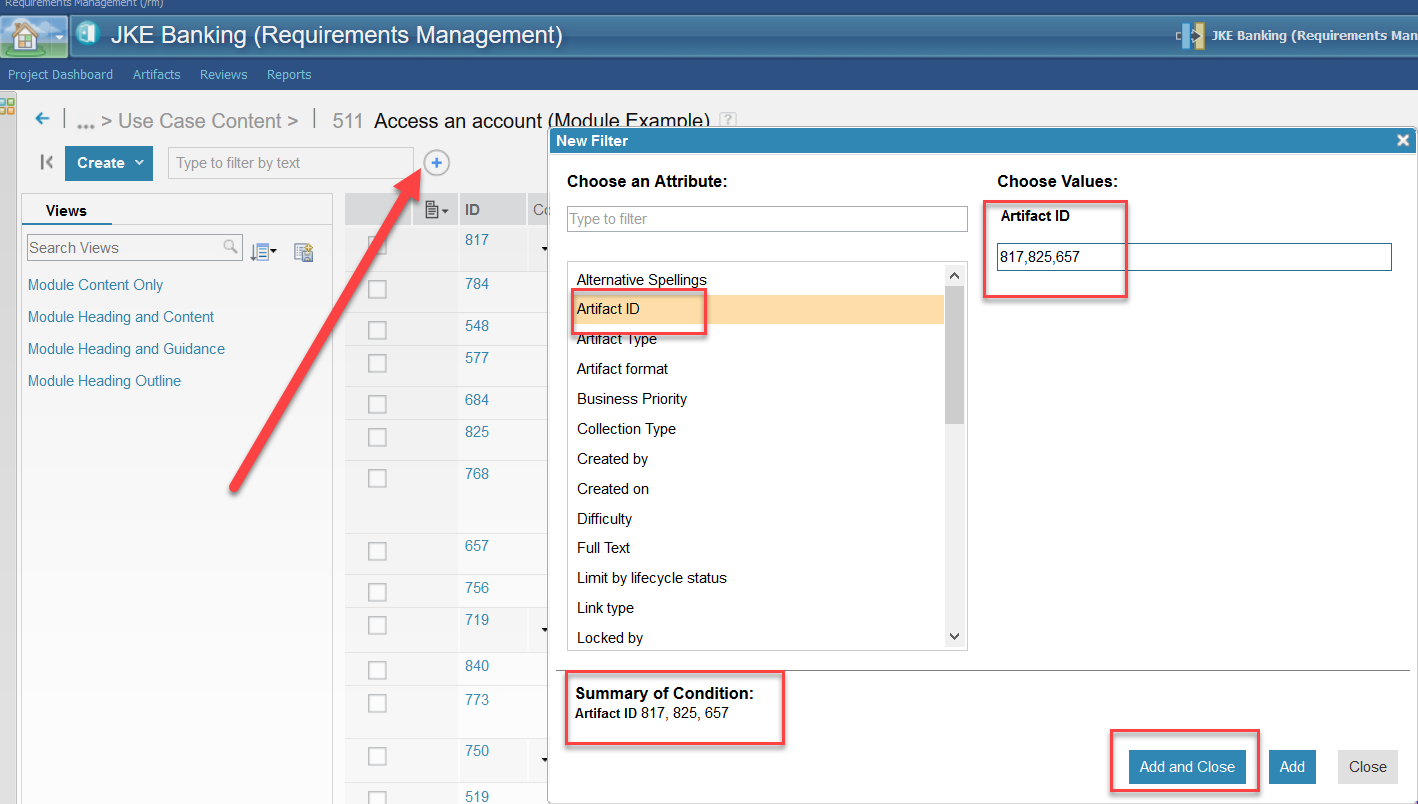View to show specific artifacts, including a higher level artifacts in module hierarchy
|
How can I create a view, where a module is filtered by specified artifact ids. This view must include a top-level non-heading artifact in a hierarchy. I am not talking about a parent-child relationship in this case.
|
Accepted answer
7 other answers
|
I'm afraid I don't know the answer to that one Andrey!
Carol
|
|
Hello
|
|
That works, but to do what Andrey is asking you'd have to include all of the top level artifact ID's too. The list could get long. |
|
I am not sure what is meant by "This view must include a top-level non-heading artifact in a hierarchy"
|
|
UPDATE:
|
|
Hi, I have the same question like Andrey. I know the question was asked several years. Does DNG has the option like classic DOORS whereas we can select any Object, then filter to 'include current object' + indicate if also wanted to show 'Ancestors' of that Object? |
Your answer
Dashboards and work items are no longer publicly available, so some links may be invalid. We now provide similar information through other means. Learn more here.


